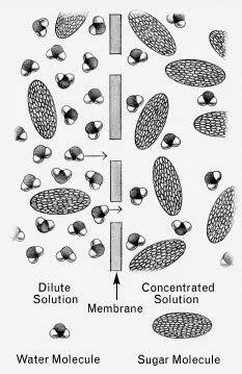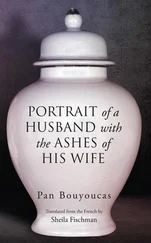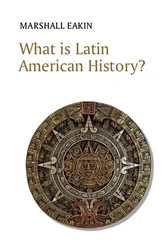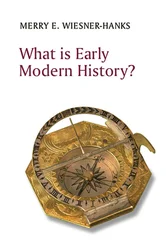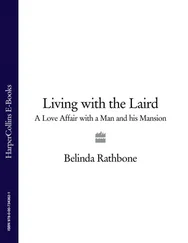Marlene Parrish - What Einstein Told His Cook 2
Здесь есть возможность читать онлайн «Marlene Parrish - What Einstein Told His Cook 2» весь текст электронной книги совершенно бесплатно (целиком полную версию без сокращений). В некоторых случаях можно слушать аудио, скачать через торрент в формате fb2 и присутствует краткое содержание. Год выпуска: 0101, Издательство: W. W. Norton & Company, Жанр: Кулинария, на английском языке. Описание произведения, (предисловие) а так же отзывы посетителей доступны на портале библиотеки ЛибКат.
- Название:What Einstein Told His Cook 2
- Автор:
- Издательство:W. W. Norton & Company
- Жанр:
- Год:0101
- ISBN:нет данных
- Рейтинг книги:4 / 5. Голосов: 1
-
Избранное:Добавить в избранное
- Отзывы:
-
Ваша оценка:
- 80
- 1
- 2
- 3
- 4
- 5
What Einstein Told His Cook 2: краткое содержание, описание и аннотация
Предлагаем к чтению аннотацию, описание, краткое содержание или предисловие (зависит от того, что написал сам автор книги «What Einstein Told His Cook 2»). Если вы не нашли необходимую информацию о книге — напишите в комментариях, мы постараемся отыскать её.
What Einstein Told His Cook 2 — читать онлайн бесплатно полную книгу (весь текст) целиком
Ниже представлен текст книги, разбитый по страницам. Система сохранения места последней прочитанной страницы, позволяет с удобством читать онлайн бесплатно книгу «What Einstein Told His Cook 2», без необходимости каждый раз заново искать на чём Вы остановились. Поставьте закладку, и сможете в любой момент перейти на страницу, на которой закончили чтение.
Интервал:
Закладка:
The problem is, how do we get rid of the other, less desirable crystal forms? First (see the graph on chapter 10), we heat the chocolate to about 120°F (50°C), which melts all six forms. Then we cool it down to about 80°F (27°C), where forms IV and above will crystallize. And then we slowly raise the temperature to 90°F (32°C), which melts the crystals of form IV, leaving us with only forms V and VI in crystallized form. But since form VI requires days or weeks to crystallize, it doesn’t. The result is that the only crystals remaining are those of the desirable form V. We have tempered our chocolate to achieve the ideal working characteristics for the pastry chef.
If, while you are working with the tempered chocolate, it loses its temper (along with you losing yours) by being heated or cooled too much, there is nothing to do but repeat the entire tempering cycle.
In cooking, rather than in decorating, with chocolate, there are a number of pitfalls, the most exasperating of which is seizing: the chocolate’s suddenly turning from a smooth, viscous liquid into a mess of grainy, muddy clumps. This can happen for several reasons, the most common of which is the effect of a small amount of water. But paradoxically, a large amount of water or watery liquid such as cream will not make the chocolate seize; the chocolate and the watery liquid will blend together like a dream.
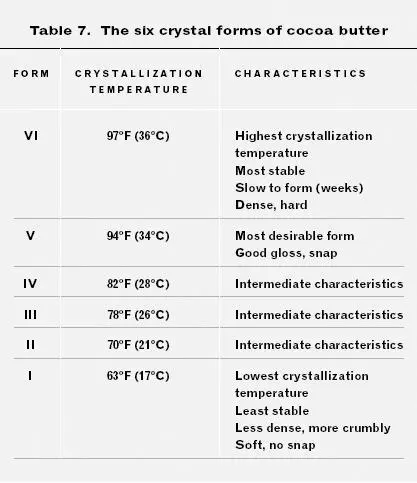
Here’s why.
Think of well-tempered chocolate as zillions of microscopic cocoa (and sugar, if it’s semisweet) particles suspended in a sea of fat. Cocoa and sugar particles are not fat-loving (lipophilic); on the contrary, they are water-loving (hydrophilic). If even a few drops of water are added, the water will be attracted to and will wet the particles, making them clump together into something like a mud ball. And a little bit of water can wet an awful lot of tiny particles, creeping between them in a thin film and holding them together by capillary attraction.
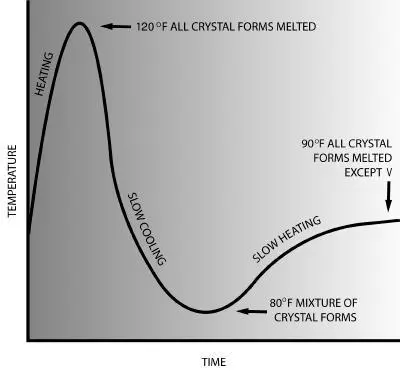
Tempering chocolate. The chocolate is first heated to 120ºF (50ºC) to melt all crystal forms, then slowly cooled to 80ºF (27ºC) and reheated to 90ºF (32ºC), so that all crystal forms are melted except the desired form V. (See Table 7.) (Temperatures are approximate.)
If stirred, virtually the entire pot of melted chocolate will then freeze into a thick mud—useless for making into smooth, glossy frostings and confections. That’s why melted chocolate must be protected from contact with the tiniest amount of water, such as condensed steam from a double boiler. Many of today’s pastry chefs melt their chocolate in a microwave oven to sidestep this danger.
But oddly enough, a large amount of watery liquid will not make the chocolate seize. If you have ever made a sand castle at the beach, you know that a little bit of water will cement the sand grains together into a mass that will hold its shape. But when a wave washes in, the large amount of water disintegrates the mass by separating the grains from one another.
That’s why, in the recipe for ganache on chapter 10, you can add a whole cup of cream to the melted chocolate and it won’t seize. The fact that heavy whipping cream is about 38 percent fat doesn’t hurt.
Cake decorating 101
When decorating with melted chocolate by piping it onto a cake or a sheet of parchment for later stripping, you want it to set up hard, rather than remaining liquid and spreading out. Before you pipe it, deliberately induce it to seize slightly by adding water carefully, drop by drop while stirring, until it begins to thicken. When the right amount of water has been added, a piped test sample will harden quickly, especially if refrigerated for 3 to 5 minutes.
WHEN CHOCOLATE IS IN BLOOM
In a box of assorted chocolates I noticed that only the candies covered with dark chocolate acquired a white film after several months, while the milk chocolates did not. I have wondered what in the chemical composition of the dark chocolate causes this.
After several months, you say? In my house, a box of chocolates is lucky to last a week.
The white film is called “bloom” and is caused by excessive or varying temperatures. You have committed the crime of chocolate abuse by not storing it properly.
The white film is not mold and is perfectly harmless, affecting only the chocolate’s appearance and to some extent its texture. Milk chocolate typically consists of about 70 percent powdered milk and sugar, with only about 12 percent chocolate liquor, so it isn’t as prone to bloom as is dark chocolate, which may contain as much as 75 percent.
There are three kinds of chocolate bloom: fat bloom, sugar bloom, and age bloom.
Fat bloom happens when under conditions of excessive warmth some of the liquid fat constituents migrate to the surface, where they form relatively large, light-reflecting crystals. Chocolate should never be stored at a temperature higher than 80°F (27°C); 63°F (17°C) is ideal.
Sugar bloom happens when the chocolate is wet or stored in high humidity, which dissolves some of the sugar out of the surface, where it remains as solid crystals when the water evaporates.
Age bloom happens to old chocolate, when the slow-forming fat crystals of form VI (see chapter 10) have had a chance to develop. They form big, coarse crystals that disrupt the smooth texture of the chocolate to the extent that it may actually crumble. For example, if you drop a bar of chocolate behind the seat of your car and forget about it, discovering it only two years later when you’re cleaning out the car before selling it, you will notice—oh, I can’t go on! It’s just too horrible to contemplate.
The best way to avoid chocolate bloom is to consume all chocolate as soon as it comes within reach. That’s my method.
THE GRINCH WHO STOLE CHOCOLATE
In health-food stores I have seen chocolate bars made out of carob, presumably to avoid the fat and caffeine in ordinary chocolate. What, exactly, is carob?
Here we go, from the sublime to the ridiculous.
First of all, contrary to common belief, chocolate doesn’t contain much caffeine at all. A square (one ounce) of unsweetened baking chocolate averages 23 milligrams of caffeine, while a cup of coffee might contain more than 100 milligrams. An ounce of unsweetened chocolate does contain 376 milligrams of theobromine, however, an alkaloid closely related to caffeine but a milder stimulant.
The leguminous carob tree ( Ceratonia siliqua ), also known since biblical times as the locust bean tree, grows in relatively arid, semi-tropical climates such as in California, Florida, and the eastern Mediterranean region. Its pods have been dubbed Saint John’s bread because the Bible says that John the Baptist survived in the wilderness by eating “locusts and honey.” In spite of the Bible’s preoccupation elsewhere with locusts (the word appears twenty-nine times in the King James version), it is more likely that John munched on locust beans rather than on the insects.
Locust bean gum, which appears in many food ingredient lists, is a tasteless, mucilaginous polysaccharide thickener obtained from the carob’s seeds. It is used to thicken frozen desserts, cultured dairy products, cream cheese, and other foods. It interacts with the other vegetable gums xanthin and carrageenan to form rigid gels, and is therefore rarely used alone.
Читать дальшеИнтервал:
Закладка:
Похожие книги на «What Einstein Told His Cook 2»
Представляем Вашему вниманию похожие книги на «What Einstein Told His Cook 2» списком для выбора. Мы отобрали схожую по названию и смыслу литературу в надежде предоставить читателям больше вариантов отыскать новые, интересные, ещё непрочитанные произведения.
Обсуждение, отзывы о книге «What Einstein Told His Cook 2» и просто собственные мнения читателей. Оставьте ваши комментарии, напишите, что Вы думаете о произведении, его смысле или главных героях. Укажите что конкретно понравилось, а что нет, и почему Вы так считаете.
